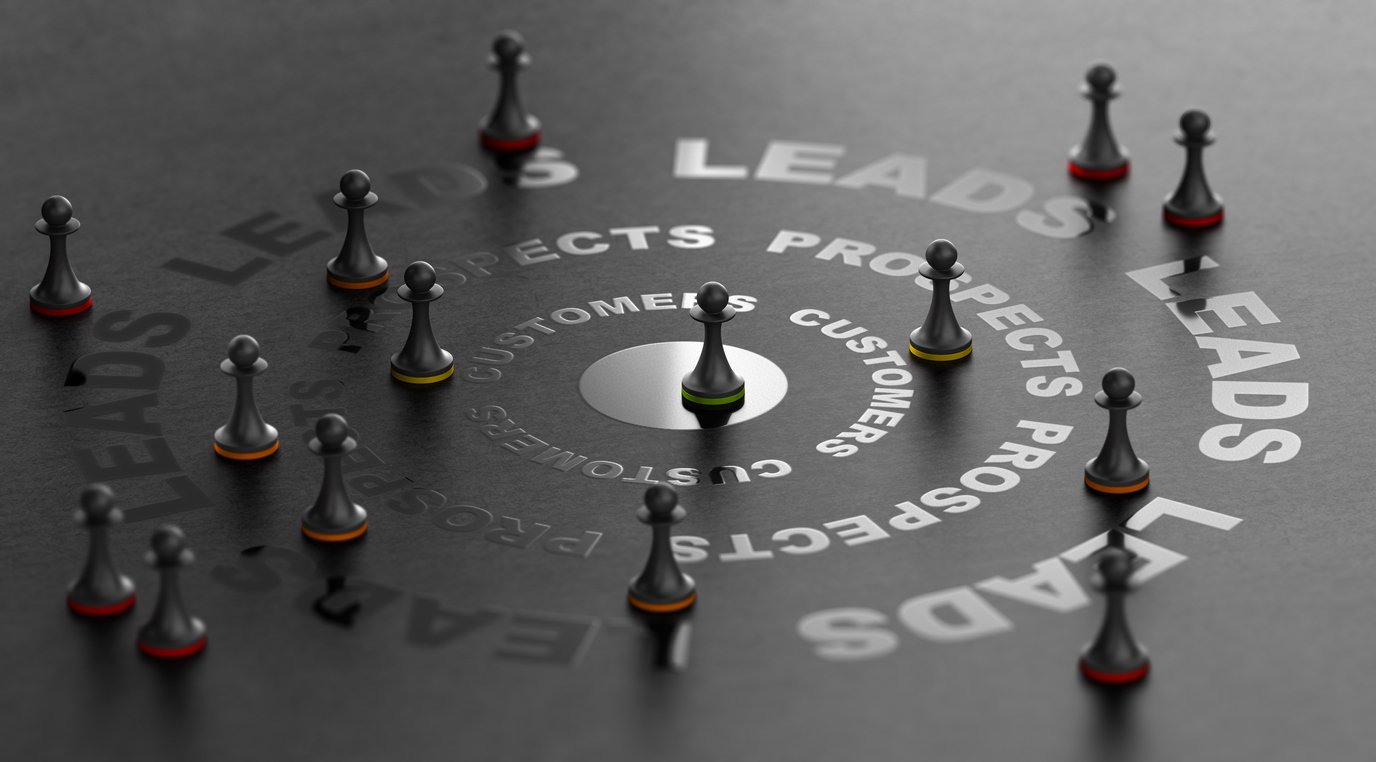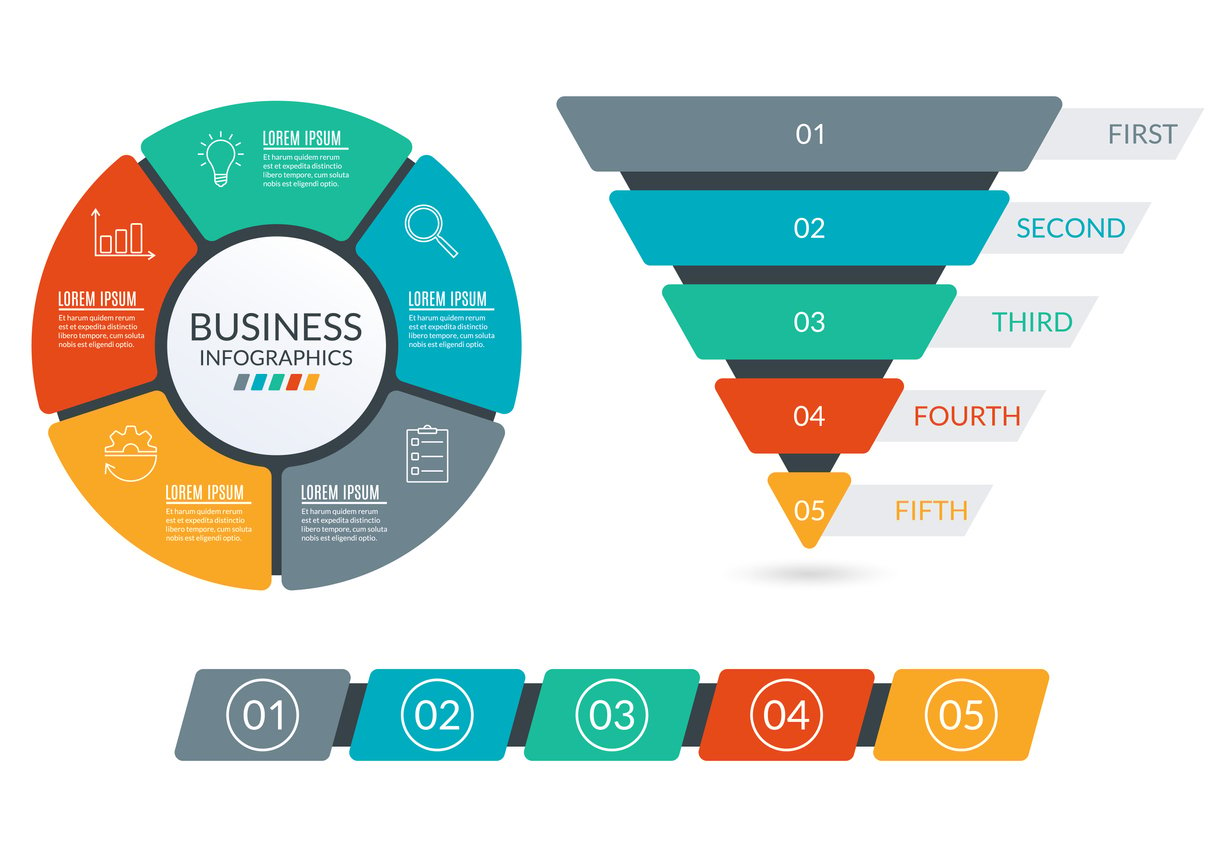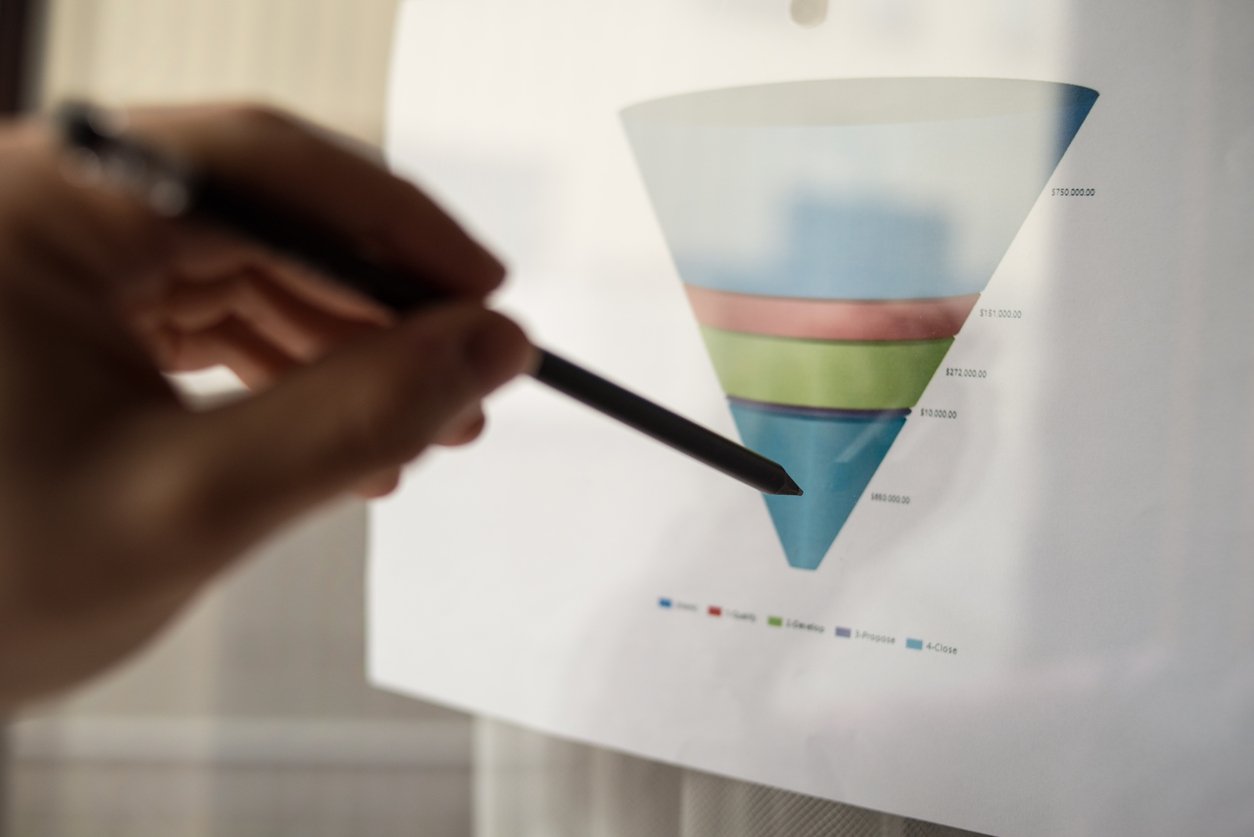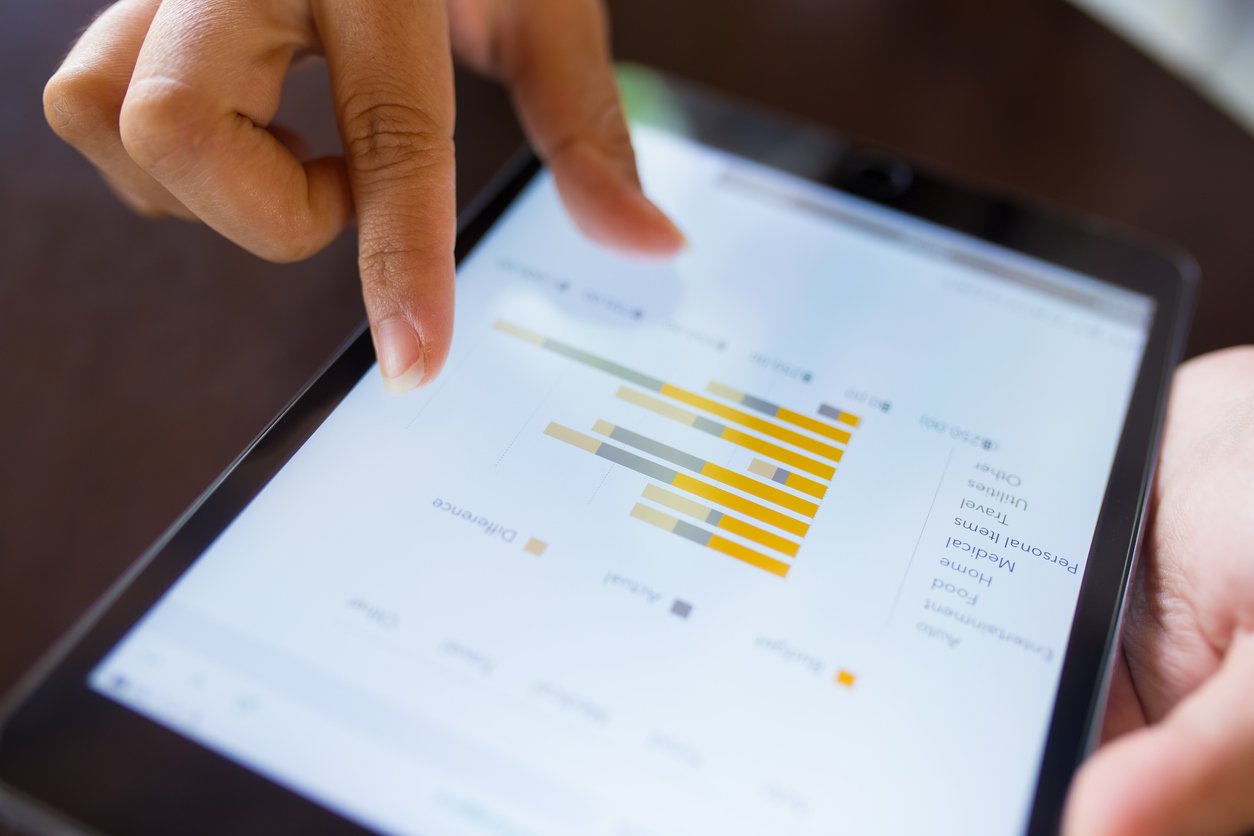
What Are Customer Segments? Definition, Types, and Real Examples
 Updated on
Updated on
 By Robins Dorvil
By Robins Dorvil
Robins Dorvil
With over 7 years of experience in the insurance industry, 4+ years as an Account Executive at Ringy CRM, and 17 years as a Creative Real Estate Inves...
learn more
Robins Dorvil
With over 7 years of experience in the insurance industry, 4+ years as an Account Executive at Ringy CRM, and 17 years as a Creative Real Estate Inves...
Table of Contents
Table of Contents
Have you ever wondered why Netflix recommends completely different shows to you than to your roommate, even though you both started on the same series last week?
Or why Starbucks seems to have a drink for every possible personality type? (I mean, who even invented the "half-caff soy latte with a pump of sugar-free vanilla"?)
These differences in preferences, habits, and needs are what customer segmentation is all about.
Customer segmentation is the art and science of dividing your audience into distinct groups based on shared characteristics. It's the foundation of personalized marketing, efficient resource allocation, and data-driven decision-making. Without segmentation, you're left shouting into the void.
In this guide, we'll walk through:
- What customer segments are and how they function in business and marketing
- The key differences between customer segments and target markets
- Why segmentation is essential for improving ROI and shaping the customer experience
What Are Customer Segments in Business and Marketing?

Customer segments are groups of people who share similar traits, like behaviors, interests, or demographics.
By grouping people this way, you can target them more precisely with marketing, tailor products that align with their needs, and improve customer satisfaction.
For example, a fitness brand might segment its audience into three categories:
- Gym rats who want cutting-edge workout gear.
- Yoga lovers are searching for eco-friendly mats.
- Casual walkers just looking for comfy sneakers.
Instead of throwing out one-size-fits-all messaging, you can craft specific approaches for each group, which increases your chances of connecting.
In fact, you're 130% more likely to know your customers' motivations.
Customer Segments Definition
Customer segments are smaller groups within a larger customer base, all built around shared characteristics.
Businesses use segmentation to uncover patterns like:
- Demographics: What's their age, gender, or income level? These basics are segmentation 101.
- Behavior: Do they shop regularly, or are they only browsing during sales? Are they loyal or just testing the waters?
- Location: Do they live in freezing Alaska, sunny Florida, or perhaps on the crowded streets of Manhattan? Where someone lives can say a lot about what they need.
Nailing these details makes it so much easier to meet your customers where they are (and get them to click "buy now").
What Do Customer Segments Mean in a Business Context
In a business context, customer segments are the basis for how companies allocate their marketing dollars.
A brand that knows its audience segments doesn't waste money showing ads for luxury handbags to bargain hunters or promoting snow boots to people in Miami. The key is to maximize reach where it matters most.
Difference Between Customer Segments and Target Markets
Many people often confuse customer segments and target markets. Customer segments are just groups you define based on shared traits.
A target market is the specific group you choose to focus on. If a brand segments its audience into eco-conscious shoppers, budget-tight buyers, and premium-luxury seekers, the eco-conscious segment might become the target market for a new sustainable product line.
Importance of Defining Customer Segments
Why does defining customer segments matter so much? One word: focus. Defining your customer segments ensures you're not wasting time, money, or energy marketing to people who aren't interested.
When you know who you're speaking to, personalization gets easier, and customers feel valued. That's how you drive loyalty, retention, and sales. Trust us, there's no downside to getting granular with segmentation.
Why Customer Segments Matter

Customer segments are the bread and butter of effective marketing and business strategy. Here's why they deserve your attention.
How Customer Segments and Marketing Strategies Improve ROI
Say you launch a shiny new ad campaign, hit send to a million people, and… crickets. Why? Because non-targeted campaigns show a 50% lower CTR than segmented campaigns.
That means most recipients don't care about what you're selling. Now imagine carefully identifying segments and sending that same campaign to a highly specific group who's actually interested.
By sending the right message to the right group, you can increase your chances of winning customers and earning a higher return on every dollar you invest.
In fact, 77% of marketing ROI comes from segmented, targeted, or triggered campaigns.
Role in Shaping Customer Experience and Product Development
Great customer experiences build loyalty. Businesses like Amazon and Spotify break down user data to segment audiences in real time. This allows them to recommend products, shows, or playlists that feel tailor-made.
Customer segmentation also plays a role in product development. For example:
- A skincare line may release an anti-aging product specifically because mature-skinned customers requested it.
- An athletic shoe company might add extra cushioning to appeal to joggers over casual walkers.
Customer Segments Business Model Integration
Every strong business model begins with understanding who you're serving.
Customer segments are so vital to strategies like the Business Model Canvas that they form one of its nine building blocks. By identifying your segments clearly, you can:
- Tailor your value proposition to resonate with specific customers.
- Choose effective communication channels to reach them.
- Develop pricing strategies that appeal to each group.
Types of Customer Segments

Every individual who interacts with your company brings unique needs, preferences, and behaviors to the table.
Grouping customers based on specific shared characteristics allows you to craft personalized experiences, deliver relevant messaging, and ultimately grow your customer base and revenue.
Here's a closer look at the different types of customer segments businesses use and how they work in the real world.
Overview of Different Customer Segments Businesses May Use
|
Types of Customer Segments |
Description |
|
Demographic Segmentation |
Groups people by quantifiable characteristics like age, gender, and income. |
|
Geographic Segmentation |
Focuses on where customers live or shop. |
|
Psychographic Segmentation |
Looks deeper into lifestyles, values, and attitudes. |
|
Behavioral Segmentation |
Tracks how customers interact with the brand, such as purchase frequency. |
|
Technographic Segmentation |
Examines customer relationships with technology, like app usage or device preferences. |
Examples of Segmentation Bases
Businesses often mix and match different types of segmentation to tailor their strategies even further. Now, let's go over each one, with customer segmentation examples.
Demographic
Demographic segmentation is probably the simplest and most widely used method. It involves sorting customers by basic measurable factors like:
- Age: Are your customers Gen Z TikTokers, or Baby Boomers spending time on Facebook? Younger audiences might respond better to influencer marketing, while older ones may prefer direct mail.
- Gender: A beauty brand might advertise differently to men versus women, focusing on skincare for one group and grooming tips for the other.
- Income: Budget-conscious buyers look for deals, while luxury shoppers are more attracted to exclusivity and prestige.
Real-World Example:
A car manufacturer might promote affordable, efficient models (like hybrids) to young professionals just starting their careers while targeting high-net-worth individuals with luxury sports cars.
Geographic
Geographic segmentation narrows down audiences based on where they live, work, or shop.
- Climate impacts product demand (no one in Miami is rushing to buy snow shovels).
- Urban, suburban, and rural customers often have vastly different needs and shopping habits.
- Cultural differences can influence preferences in style, language, or even food.
Real-World Example:
Fast-food chains adapt their menu for local tastes. McDonald's serves teriyaki burgers in Japan, spiced chicken in India, and poutine in Canada.
Psychographic
Now we're getting into the more emotional side of segmentation. Psychographic analysis explores:
- Lifestyles: Are they adventurous thrill-seekers, or do they enjoy comfortable, home-based activities?
- Values and beliefs: Does your audience prioritize sustainability, family, or career advancement?
- Interests and hobbies: Someone into wellness and yoga might be drawn to organic and eco-friendly products.
Real-World Example:
Patagonia targets environmentally conscious, outdoor-loving customers by focusing on sustainability and durable, adventure-ready gear. They even market repairable and recycled clothing to connect with customers' green values.
Behavioral
This type zeroes in on what your customers do rather than who they are. Behavioral segmentation considers:
- Purchase drivers: Are customers buying based on need, impulse, or loyalty to a specific brand?
- Frequency: Do they buy regularly (like weekly grocery shoppers) or only on special occasions?
- Brand loyalty: Do they stick with one brand year after year, or are they up for trying something new?
Real-World Example:
E-commerce giants like Amazon track user behaviors, such as search history, to create personalized product recommendations and remind customers about items left in their carts.
Technographic
The newcomer to the segmentation family, technographics, is increasingly important in today's digital-first world. It focuses on how customers use and interact with technology:
- Device preferences: Are customers on mobile, desktop, or tablets? And what operating systems do they use?
- App or platform usage: Are they frequent users of social media apps, streaming services, or productivity tools?
- Tech savviness: Are they early adopters or still holding onto vintage flip phones?
Real-World Example:
A video game company might promote their newest console to early adopters who buy gadgets on launch day, while targeting casual gamers with simpler, portable options.
Main Customer Segments vs Niche Customer Segments
|
Main Customer Segments |
Niche customer segments |
|
Large, general segments that make up the bulk of your market. Example: A shoe company's main segment might be "people looking for comfortable walking footwear." |
Smaller, highly specific subgroups within the broader audience. Example: That same shoe company could identify a niche customer segment like "urban professionals needing all-day support for their commute, office, and gym." |
Main customer segments are the large, general segments that make up the bulk of your market. They often focus on basic characteristics like age, gender, or common needs. Think of segments like "fitness enthusiasts" or "working parents."
Niche customer segments, on the other hand, break your audience down even further, focusing on very specific traits or interests. While they represent a smaller share of the market, they often convert at higher rates because the messaging feels hyper-relevant.
Customer Segments Examples in Business

Customer segmentation is everywhere, from the emails you receive to the products you see advertised on Instagram. The better you understand your audience, the more personalized your efforts can be.
Not sure what this looks like in the real world? Here are some examples to get you thinking.
General Examples of Customer Segments Across Industries
- Retail:
Department stores often segment customers into categories like:- Price-conscious shoppers who use coupons and hunt for deals.
- Trend-focused shoppers looking for exclusive collections.
- VIP or loyal customers receiving offers for early access to sales.
- Healthcare:
Healthcare providers may segment by patient needs, such as:- Preventative care patients looking to stay healthy through regular checkups.
- Individuals managing chronic conditions who need consistent follow-up care and medical supplies.
- Fitness enthusiasts keen on wellness programs or weight-loss consultations.
- Travel and Hospitality:
Travel businesses may address segments like:- Budget-conscious families booking affordable vacations with bundled deals.
- Luxury travelers seeking high-end escapes with spa packages.
- Solo adventurers looking for unique, off-the-beaten-path destinations.
- Telecommunications:
Telecom companies might group their customers into:- Heavy internet users needing high-speed, unlimited data plans.
- Casual users who only require basic phone and text options.
- Business professionals searching for bundled solutions that include international coverage.
Customer Segments Examples in Business Plan Scenarios
- E-commerce Start-Up:
A sustainable online clothing brand identifies these segments in their plan:- Millennials interested in eco-friendly fashion.
- Parents buying organic clothing for their kids.
- High-income shoppers willing to pay extra for luxury, eco-conscious items.
- Fitness App Development:
A fitness app's business strategy includes segments like:- Beginners looking for simple, guided workout routines.
- Advanced users who want customizable plans to level-up their training.
- Time-pressed professionals needing short but effective at-home workouts.
- Meal Delivery Service:
A subscription meal kit might target segments such as:- Tech-savvy singles who lack time to cook.
- Health-focused couples seeking organic, portion-controlled meals.
- Families looking for kid-approved dishes with easy preparation.
Step-by-Step Process to Identify Customer Market Segments

Segmenting your customers starts with understanding who they are and what makes them tick. But how do you get from "a mess of data" to actionable insights?
Follow this step-by-step process.
Collect Customer Data
Every segmentation effort begins with data. The more you know about your audience, the easier it is to create accurate segments. Gather data from:
- Sales records: Check which products are most popular, what time of year they sell best, and who's buying them.
- Website analytics: What pages are customers visiting? How long do they stay? What actions are they taking? Tools like Google Analytics can help.
- Customer feedback: Reviews, complaints, and even casual comments offer valuable insights. Survey responses? Gold.
Real-World Action Step:
If you run an online store, review abandoned cart data to figure out what's piquing customer interest but not converting.
Use Analytics and Surveys
- Surveys and polls: Ask your customers directly what they're looking for, what they value most, and how they found your business.
- Social media insights: Many platforms like Instagram and Facebook offer analytics dashboards that highlight audience demographics and engagement patterns.
- Third-party tools: Use CRM platforms (like HubSpot or Salesforce) to help connect the dots between sales, marketing, and customer engagement data.
Real-World Action Step:
Send a post-purchase survey asking customers why they chose your product and what could make their experience better.
Identify Shared Characteristics
With data in hand, it's time to look for patterns. What traits keep popping up again and again?
Common characteristics could include:
- Demographics: Do certain age groups or income brackets lean toward specific product lines or services?
- Location: Are sales concentrated in certain regions or cities?
- Behaviors: Does a segment prefer in-store purchases over online orders?
This step turns overwhelming data into something you can actually use. The key is putting yourself in the customer's shoes and asking, What makes this group unique?
Real-World Action Step:
If you're selling luxury watches, you may find that repeat customers are often tech-savvy professionals in urban areas who value craftsmanship and exclusivity.
Segment and Validate
Once your segments start to take shape, it's time to test your theories. You don't want to invest all your marketing dollars chasing a customer profile that doesn't actually exist. Here's how you can validate your segments:
- A/B testing: Run two different marketing messages targeted toward one segment. Which performs better?
- Focus groups: Gather small groups from your identified segments to test ideas directly.
- Pilot campaigns: Try a small, low-budget campaign aimed at your top segment and measure the results.
Real-World Action Step:
If you've identified "eco-conscious millennials" as a primary segment, run a sustainability-focused ad exclusively on Instagram to test their engagement.
Tools and Techniques
Sometimes, a spreadsheet just won't cut it. The right tools make segmentation easier, faster, and far more effective. These include:
- Customer relationship management (CRM) tools: Platforms like Ringy help manage and analyze customer interactions.
- Persona builders: Tools like HubSpot's persona templates make creating customer profiles intuitive.
- Survey tools: Google Forms, Typeform, or dedicated feedback apps can collect customer insights with ease.
- Analytics software: Platforms like Tableau or Google Analytics visualize data patterns for smarter decision-making.
Real-World Action Step:
Use a CRM tool to create and store customer personas so your sales staff can quickly reference each segment before interacting with leads.
Using Machine Learning and AI for Customer Segmentation

Artificial intelligence (AI) and machine learning are cutting-edge technologies that can help you sift through massive data sets, uncover hidden patterns, and create hyper-targeted segments that traditional methods might miss.
Here's how AI takes segmentation to the next level.
AI Customer Segments and How They're Created
AI creates customer segments by analyzing massive amounts of data far faster and more accurately than humans can. In fact, 63% of marketers use AI for market research today.
It pulls from sources like purchase histories, social media behaviors, website activity, and CRM systems to spot trends and similarities among customers. From there, AI-powered tools generate detailed profiles of each segment.
For example, imagine an AI tool analyzing an online retailer's customer data. It may identify one segment of customers as frequent buyers of fitness equipment who also engage with wellness-related Instagram ads.
Another group might consist of occasional buyers interested in deals and discounts. Based on this, the retailer can craft specific campaigns tailored to each group.
Customer Segments and Machine Learning Approaches
Machine learning methods are the backbone of AI-based segmentation. Here are three key approaches you can use to refine and target your customer segments:
Clustering (e.g., k-means)
Clustering is a popular unsupervised machine learning technique that groups customers with similar characteristics. Tools like k-means clustering use algorithms to automatically categorize customers based on factors like:
- Spending habits.
- Frequency of interactions.
- Demographics.
Example:
A subscription service using k-means might organize its customers into:
- Heavy users who subscribe to multiple subscription tiers.
- Occasional users investing in the basic package only during sales.
- New users exploring services for the first time.
These clusters help businesses tailor campaigns to specific behaviors, such as offering premium-tier promotions to heavy users.
Predictive Analytics
Predictive analytics leverages historical data to forecast future customer behavior. This method helps identify which segments are most likely to make repeat purchases, churn, or respond to specific incentives.
Example:
A retailer might use predictive analytics to identify a segment of customers who frequently buy winter gear, allowing them to predict and ramp up marketing efforts as the season approaches.
Real-Time Segmentation
Real-time segmentation uses streaming data to dynamically categorize customers as they interact with your business. This is particularly useful in industries like e-commerce, where reacting instantly can drive conversions.
Example:
A live-streaming platform may identify a "VIP" segment of users who are actively participating in chats during events and offer them exclusive merchandise discounts within minutes.
Benefits of Automated Segmentation for Large Customer Databases
- Speed: Analyzing massive amounts of data in seconds.
- Precision: Detecting subtle patterns humans might miss.
- Scalability: Handling enormous datasets without diminishing accuracy.
- Cost-Efficiency: Reducing the need for extensive manual labor in segmentation tasks.
Targeting and Marketing to Customer Segments

Once you've identified your customer segments, the real work begins. Targeting and marketing to these groups in a way that feels personal is both an art and a science.
How to Build Messaging for Target Customer Segments
- Identify key motivators: What drives your audience? Is it discounts, convenience, or quality?
- Tailor language: Use wording that speaks directly to what they want. Urban millennials might connect with bold, playful language, while older professionals may prefer formal and factual tones.
- Choose the right channels: Engage on platforms where your audience hangs out, whether that's Instagram, email newsletters, or LinkedIn.
Aligning Products and Services to Each Segment's Needs
- Develop new product lines: Create solutions dedicated to niche segments, like gluten-free snacks for health-conscious parents.
- Offer tiered pricing: High-value customers might want exclusive, premium options, while price-sensitive customers prefer bare-bones versions.
- Improve accessibility: Make adjustments for specific needs, such as shipping international products to target global segments.
Examples of Campaigns Tailored to Specific Segments
- Fitness App: A fitness brand might send targeted emails to beginners with an offer for an easy-to-follow workout plan, while advanced users might receive challenges like "Complete a 10k in 30 days."
- Streaming Platforms: Netflix excels at segmentation by serving personalized recommendations based on viewing habits. Horror buffs might see trailers for the latest thrillers, while rom-com lovers get promoted warm-and-fuzzy hits.
- Retail: A fashion retailer might send exclusive discount codes to high-spending customers or notify budget buyers of seasonal clearance sales.
Final Thoughts on Customer Segmentation
Customer segmentation gives you a clear picture of who you're serving and how to serve them better. When you break down your audience into smaller groups based on shared traits, you gain the clarity to design more relevant products, deliver stronger messaging, and build meaningful relationships.
However, it's important to remember that your work is never done. So, if you're serious about making segmentation part of how your business runs, tools like Ringy can help. Ringy lets you track leads, analyze behaviors, and act on segmentation insights all in one place.

Skyrocket your sales with the CRM that does it all.
Calling? Check. SMS? Check. Automation and AI? Check. Effortlessly keep in touch with your customers and boost your revenue without limits.

Take your sales to new heights with Ringy.
Sales in a slump? Ringy gives you the tools and flexibility you need to capture leads, engage with them, and turn them into customers.
Subscribe to Our Blog
Enter your email to get the latest updates sent straight to your inbox!
Categories
Related Articles

























































































